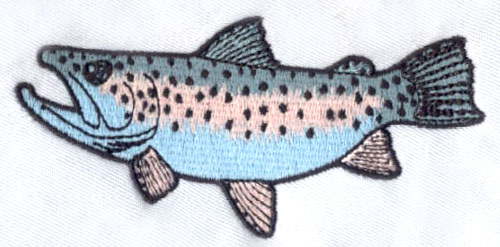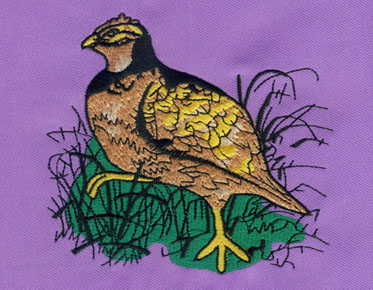A Detailed Guide to Creating Gradient in Embroidery Digitizing
Embroidery digitizing is a process that transforms a picture or image into a digital design file that an embroidery machine can interpret. One of the most visually striking techniques in this process is the creation of gradient fills. Gradient fills can add depth and dimension to your embroidery designs, making them stand out. However, creating gradient fills can be quite technical. This article from Eagle Digitizing will provide a detailed guide on how to create gradient fills in embroidery digitizing.
Step 1: Select the Area for the Gradient Fill
The first step in creating a gradient fill is
to select the area of your design where you want the gradient to be applied.
This selection process is typically done using a selection tool in your embroidery digitizing software.
Depending on the software, you may need to create a closed path or shape that
defines the area to be filled. This step requires precision as the selected
area will determine where your gradient colors will transition.
Step 2: Choose the Gradient Fill Option
Once you've accurately selected the area to be
filled, the next step is to choose the gradient fill option in your software.
This option is usually found in the fill settings or properties panel of your
digitizing software. If you're having trouble locating this option, it's
advisable to refer to your software's help guide or online tutorials.
Alternatively, you can seek assistance from an embroidery digitizing company, which often has extensive experience
and expertise in handling various digitizing software and can guide you through
the process.
Step 3: Select Your Colors
After activating the gradient fill option, the next step is to select your colors. Most digitizing software allows you to choose at least two colors for a gradient fill. The colors you select will define the range of the gradient. For instance, if you're creating a gradient fill that transitions from light blue to dark blue, you'll need to select these two colors in this step. If you're unsure about color selection or how to create the best gradient effect, a professional digitizing service can provide expert guidance and assistance, ensuring your gradient fill achieves the desired visual impact.
Step 4: Set the Direction of the Gradient
The final step in creating a gradient fill is
to set the direction of the gradient. This setting determines how the colors
transition within the selected area. The gradient could move horizontally from
left to right, vertically from top to bottom, or diagonally. Some software also
allows you to create radial gradients that emanate from a central point.
Creating gradient fills in embroidery digitizing can be a complex
process that requires practice and patience. However, the visual impact that
gradient fills can add to your embroidery designs makes the learning process
worthwhile. If you find the process too complex or time-consuming, consider
using professional embroidery digitizing services like Eagle Digitizing. These services can handle the digitizing
process for you, ensuring professional results every time. They have the
expertise to handle complex designs and gradients, delivering high-quality
digitized files ready for your embroidery machine.



